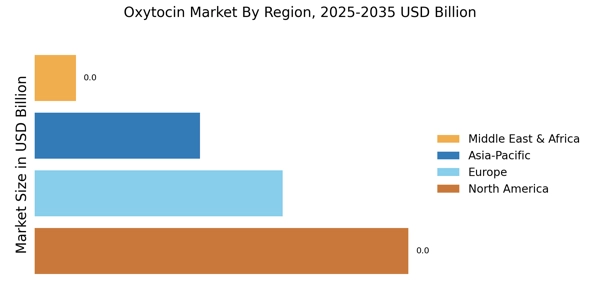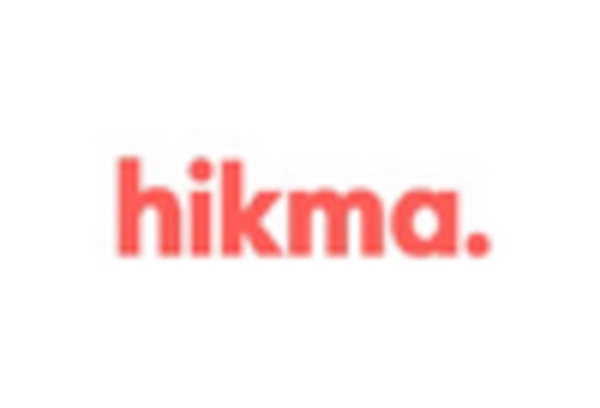Oxytocin Market Summary
As per MRFR analysis, the Oxytocin Market Size was estimated at 0.0961 USD Billion in 2024. The Oxytocin industry is projected to grow from 0.1049 in 2025 to 0.2531 by 2035, exhibiting a compound annual growth rate (CAGR) of 9.2 during the forecast period 2025 - 2035.
Key Market Trends & Highlights
The Oxytocin Market is experiencing a dynamic shift towards therapeutic applications and innovative delivery methods.
- The North American region remains the largest market for oxytocin, driven by its established healthcare infrastructure.
- Asia-Pacific is emerging as the fastest-growing region, reflecting increasing investments in healthcare and pharmaceutical innovations.
- The antepartum segment holds the largest share, while the postpartum segment is witnessing rapid growth due to rising awareness of maternal health.
- Key market drivers include the rising demand for oxytocin in labor induction and expanding research on its therapeutic benefits.
Market Size & Forecast
| 2024 Market Size | 0.0961 (USD Billion) |
| 2035 Market Size | 0.2531 (USD Billion) |
| CAGR (2025 - 2035) | 9.2% |
Major Players
Ferring Pharmaceuticals (CH), Novartis (CH), Baxter International (US), Hikma Pharmaceuticals (GB), Teva Pharmaceutical Industries (IL), AstraZeneca (GB), Eli Lilly and Company (US), Mylan N.V. (US)


















Leave a Comment